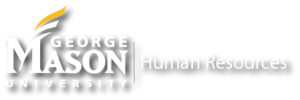What is Orientation and Onboarding
Although some may consider them the same, orientation and onboarding refer to two separate, but related, components of welcoming and supporting employees into the University and their role.
Orientation
Orientation is effectively integrating a new employee into their position, their unit/department, and the university. Orientations create a positive first impression, establish relationships, and provides support and information to set the new employee up for success.
It is important to consider that multiple parties are responsible for orienting an employee. To learn more, see the “Who is Involved” section for details. University-level orientation programs are administered differently depending on employee type. See below for a quick reference guide.
| Employee Category | University-level Orientation Programs | Schedule | Administered By |
|---|---|---|---|
| Instructional/Research (I/R) Faculty | New Faculty Orientation | Annually | Office of the Provost |
| Classified Staff | New Employee Orientation | Bi-weekly | HR & Payroll |
| Administrative/Professional (A/P) Faculty | New Employee Orientation | Monthly | HR & Payroll |
| Adjunct Faculty | New Adjunct Faculty Success Workshop | Bi-annually | Office of the Provost |
New Employees will receive communication about their assigned orientation session date/time prior to their start date.
Onboarding
According to the Society of Human Resource Management (SHRM),
“New employee onboarding is the process of integrating a new employee with a company and its culture, as well as getting a new hire the tools and information needed to become a productive member of the team. Onboarding new hires at an organization should be a strategic process that lasts at least one year, staffing and HR experts say, because how employers handle the first few days and months of a new employee's experience is crucial to ensuring high retention.”
A well-organized onboarding experience signals to a new employee that we are excited for them to join the organization and that they are joining a professional and highly functional team.
According to Gallup’s report, “Creating an Exceptional Onboarding Journey for Your New Employees,” an employee’s onboarding experience should help them answer the following five questions:
- “What do we believe in around here?”
- “What are my strengths?”
- “What is my role?”
- “Who are my partners?”
- “What does my future here look like?”
Our hope is that this onboarding toolkit will support Mason’s Supervisor network in creating a personalized onboarding experience for new hires that supports answering the questions above and supporting our new hires in contributing their perspectives and talents in a meaningful way.
